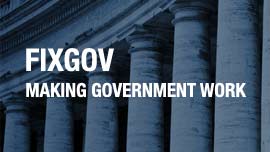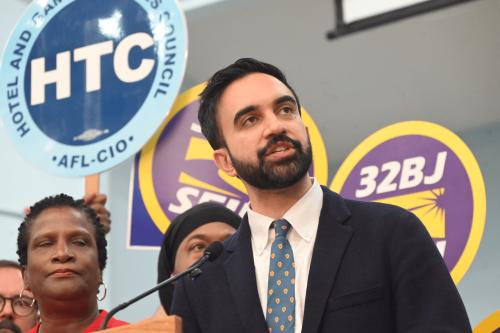For weeks, the Department of Government Efficiency, led by Elon Musk, the world’s richest man and a special government employee, has conducted a campaign to radically downsize the federal government and terminate numerous agency employees. Musk’s actions—including freezing federal grants, issuing an executive order offering employees paid resignation through Sept. 30, dismantling the U.S. Agency for International Development (USAID), and seizing control of massive databases with sensitive information on all Americans—have raised serious legal and constitutional questions.
Most of these controversial actions are tied up in court, with 25 cases filed so far—all but one ruling against Trump, while the other was dismissed on standing rather than merits. This has not fazed either President Trump or Elon Musk, both of whom have run businesses while facing frequent lawsuits. More legal challenges are expected, some likely reaching the Supreme Court.
The long-term goal is to expand presidential power under the theory of the Unitary Executive, which advocates for greater White House control over the government. Conservatives have pushed for this since the Reagan administration, and Trump hopes Musk’s actions will help advance it. This also explains why USAID was targeted first. Foreign aid is widely unpopular, with many Americans overestimating how much is spent on it. Thus, closing the agency would likely avoid public backlash, with the impact felt mostly by farmers—more on that later.
Cutting government budgets is broadly popular in theory, but if Trump and Musk overcome legal challenges and succeed in large-scale downsizing, they will find that cutting government can backfire on them. By using an axe instead of a scalpel, they run the risk of throwing out the baby with the bathwater and eliminating essential functions. In its haste, DOGE is likely to disrupt services the public supports, making the government less effective. History shows that major government failures are politically lethal, often more so than constitutional arguments. When both occur, they can create serious political problems for the president and the party in power.
What counts as a major government failure? The Carter administration’s botched rescue of the Iran hostages, the Bush administration’s mishandling of Hurricane Katrina, the Obama administration’s health care website crashes that delayed Obamacare sign-ups, the Biden administration’s chaotic withdrawal from Afghanistan, the Trump administration’s ineffective response to the COVID-19 pandemic, and many more. These are failures no president—no matter how skilled a communicator—can spin or deflect. Blaming predecessors or changing the subject won’t work when the public can clearly see that something critical went disastrously wrong.
If Trump’s Department of Government Efficiency plans survive legal challenges, several major failures could follow—each landing squarely on the president’s shoulders. As President Harry Truman famously said, “The buck stops here.”
Disruptions in distribution of Social Security and veterans’ benefits
The federal payment system, which DOGE briefly controlled before a judge intervened, oversees Social Security payments, among other critical functions. Disruptions to this system could have serious consequences.1 Plenty. DOGE has been using AI systems to explore these databases, but AI is prone to hallucinations.2 As Brookings scholar Darrell West warns “it is scary to use untested or poorly designed AI on government data sets not knowing how it makes decisions or where and how it was trained.” Unlike the turmoil at Twitter when Musk took over, disruptions in federal programs would have severe real-world consequences. A brief outage on X may be inconvenient, but delays or errors in Social Security, Medicaid, or veterans’ benefits payments could be devastating—especially for the roughly 40% of retired Americans over 60 who, as of 2013, relied solely on Social Security for income while working fewer than 30 hours per week.
Potential delays in tax refund processing
Disrupting the IRS database could have even more widespread consequences. In 2023, 69% of Americans received tax refunds from the IRS, with an average refund of $2,812. Many taxpayers intentionally over-withhold and rely on their refunds each spring for major purchases, like a new refrigerator. Now, imagine if, due to DOGE’s actions, refunds were delayed until November 2025 instead of arriving in the spring and summer. Or worse—if errors in newly written code caused refunds to be incorrect. Taxpayers would be outraged over delays or mistakes in something as crucial as their refunds, where the stakes are high and expectations are clear.
Increased tax evasion leading to reduced federal revenue
Currently, the IRS employs more than half of the Treasury Department’s workforce. Tax experts have long argued that the IRS needs more employees, not fewer. The “tax gap”—the estimated difference between what the IRS collects and what taxpayers actually owe—is estimated at $428 billion, with most of it resulting from underreporting and a smaller portion from non-filing. Increasing tax enforcement alone could significantly contribute to the Department of Government Efficiency’s goal of saving $1 trillion to $2 trillion.
In reality, the opposite is more likely. As my Brookings colleague Vanessa Williamson has noted, “Cutting the IRS is a top Republican priority.” With fewer staff, the risk of being audited decreases while the incentive to underreport increases. That’s not a sustainable way to reduce the deficit.
Increased risk of mortality from foodborne illnesses
The Food and Drug Administration (FDA) uses a “traceback system” to track foodborne illnesses. “Investigators trace food that ill people report eating all the way back to a farm or production facility,” the FDA explains. “Finding commonalities in the supply chains of foods eaten by ill people helps investigators zero in on a potential source of the outbreak.” Foodborne illnesses affect millions of Americans each year, leading to thousands of deaths—especially among the elderly and those with other health conditions. The traceback process is laborious, involving the FDA, Centers for Disease Control and Prevention, and state and local health departments. Widespread cuts could significantly undermine the government’s ability to identify the source of these outbreaks.
Further strain on an already fragile agricultural economy could exacerbate global food insecurity
In its rush to shut down USAID, DOGE risks further harming the already fragile farm economy. According to the Washington Post, “American farms…supply about 41% of the food aid that the agency, working with the U.S. Department of Agriculture, sends around the world each year, according to a 2021 report by the Congressional Research Service. In 2020, the U.S. government bought $2.1 billion in food aid from American farmers.”
On February 3, DOGE released a list of USAID-funded grants it claims could be categorized as waste and abuse. However, the total amount of targeted grants with specific numbers only adds up to roughly $12.1 million. Could these grants be cut without jeopardizing the $2.1 billion paid to American farmers and sent to people in need? The approach taken by DOGE is a clear example of discarding both the good and the bad, impacting both red and blue states alike.
Reducing intelligence personnel at the CIA or FBI could increase the risk of domestic terrorist attacks
In a surprising move on February 3, the CIA sent an unclassified email to the Office of Personnel Management (OPM) listing individuals hired over the past two years. Many of these hires were focused on strengthening U.S. intelligence on China, a growing national security concern. The email potentially exposed the identities of clandestine personnel, and OPM then used it to offer buyouts—making it the first national security agency to do so.
Reducing the CIA or FBI workforce in an era of asymmetric warfare, when threats to U.S. security can emerge from places most Americans have never heard of, may be, as intelligence expert David Ignatius put it, “the Trump administration’s most dangerous misstep.” The failure to prevent 9/11 was one of the most significant intelligence lapses in U.S. history—downsizing the CIA could risk a similar failure.
This list of potential failures extends across nearly every government agency. Musk acknowledges the likelihood of mistakes, saying no one can be perfect, and promises to fix problems quickly. But government operations are not like the tech industry—errors in issuing payments, tracking diseases, or ensuring aviation safety can have serious, sometimes life-threatening consequences. If DOGE indiscriminately slashes budgets and fires essential workers, it risks disaster. The fallout from major failures could hurt Trump’s poll numbers and weaken GOP support.
-
Footnotes
- There is ongoing debate about whether or not the young man in charge at Treasury only had “read-in access” or full “write-in authority,” the latter of which would allow modifications to the algorithms governing payments to millions of individuals and contractors.
- “AI hallucination is a phenomenon wherein a large language model (LLM)—often a generative AI chatbot or computer vision tool—perceives patterns or objects that are nonexistent or imperceptible to human observers, creating outputs that are nonsensical or altogether inaccurate.” https://www.ibm.com/think/topics/ai-hallucinations
The Brookings Institution is committed to quality, independence, and impact.
We are supported by a diverse array of funders. In line with our values and policies, each Brookings publication represents the sole views of its author(s).








Commentary
How DOGE cutbacks could create a major backlash
February 14, 2025